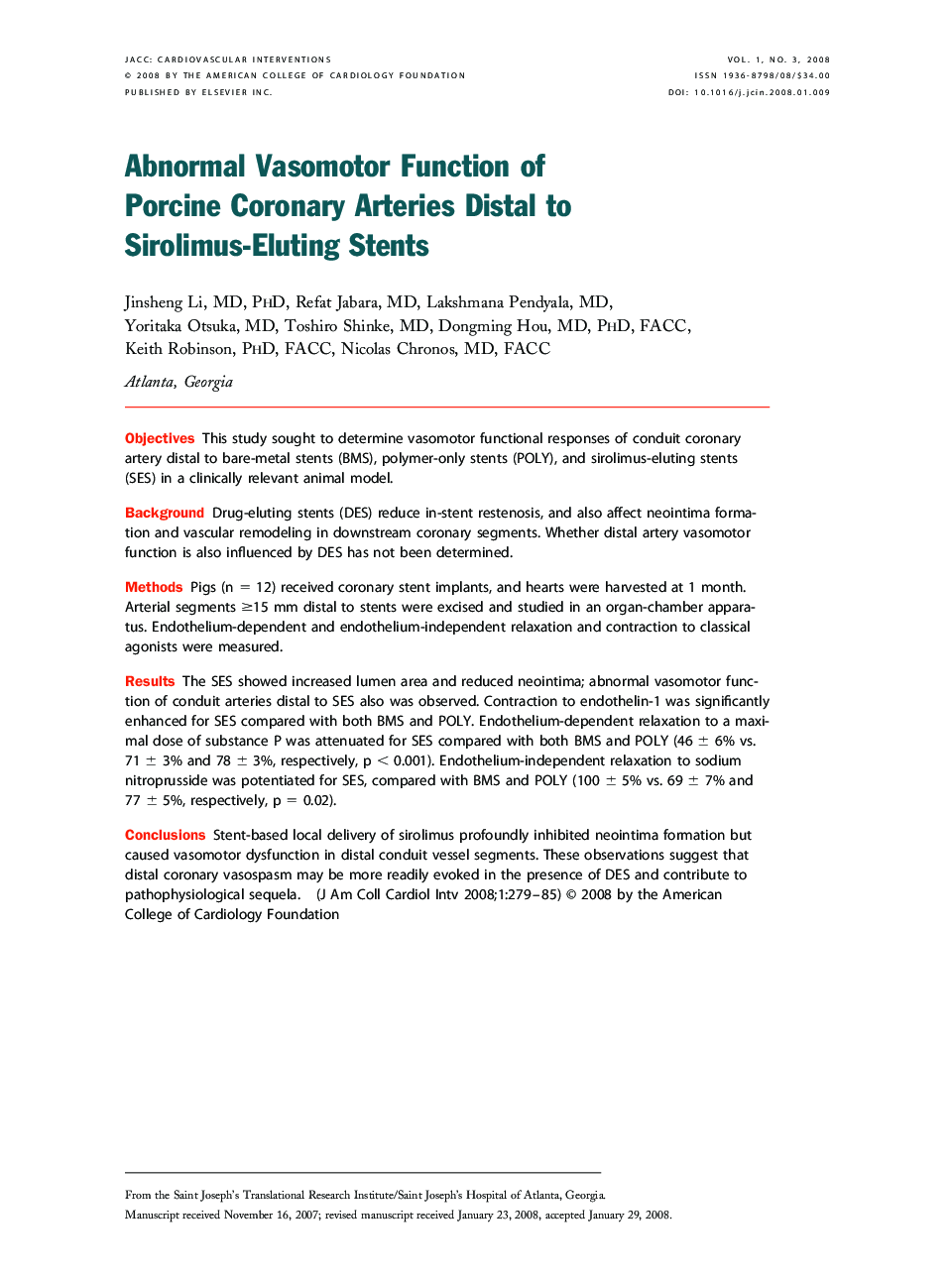| Article ID | Journal | Published Year | Pages | File Type |
|---|---|---|---|---|
| 2941836 | JACC: Cardiovascular Interventions | 2008 | 7 Pages |
ObjectivesThis study sought to determine vasomotor functional responses of conduit coronary artery distal to bare-metal stents (BMS), polymer-only stents (POLY), and sirolimus-eluting stents (SES) in a clinically relevant animal model.BackgroundDrug-eluting stents (DES) reduce in-stent restenosis, and also affect neointima formation and vascular remodeling in downstream coronary segments. Whether distal artery vasomotor function is also influenced by DES has not been determined.MethodsPigs (n = 12) received coronary stent implants, and hearts were harvested at 1 month. Arterial segments ≥15 mm distal to stents were excised and studied in an organ-chamber apparatus. Endothelium-dependent and endothelium-independent relaxation and contraction to classical agonists were measured.ResultsThe SES showed increased lumen area and reduced neointima; abnormal vasomotor function of conduit arteries distal to SES also was observed. Contraction to endothelin-1 was significantly enhanced for SES compared with both BMS and POLY. Endothelium-dependent relaxation to a maximal dose of substance P was attenuated for SES compared with both BMS and POLY (46 ± 6% vs. 71 ± 3% and 78 ± 3%, respectively, p < 0.001). Endothelium-independent relaxation to sodium nitroprusside was potentiated for SES, compared with BMS and POLY (100 ± 5% vs. 69 ± 7% and 77 ± 5%, respectively, p = 0.02).ConclusionsStent-based local delivery of sirolimus profoundly inhibited neointima formation but caused vasomotor dysfunction in distal conduit vessel segments. These observations suggest that distal coronary vasospasm may be more readily evoked in the presence of DES and contribute to pathophysiological sequela.
